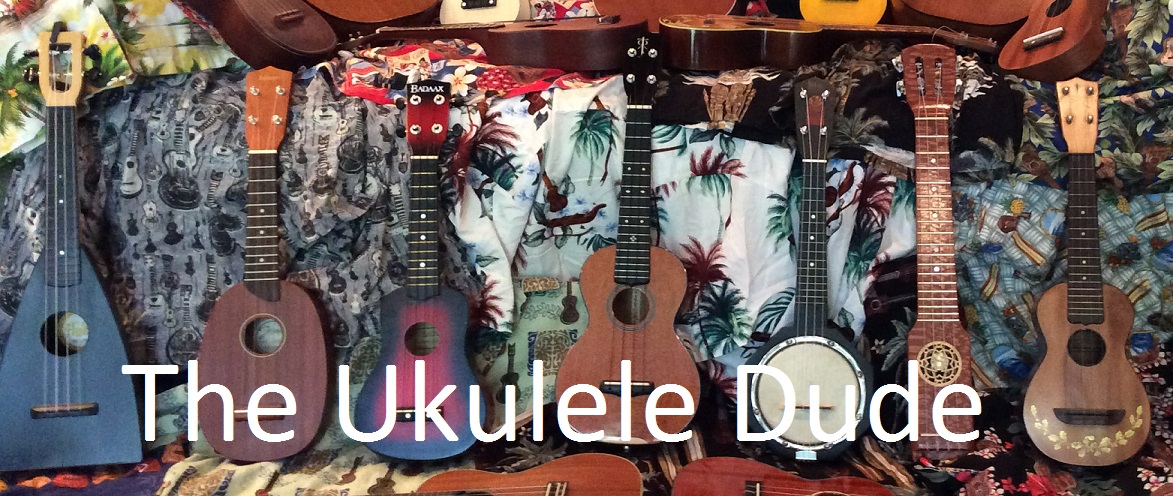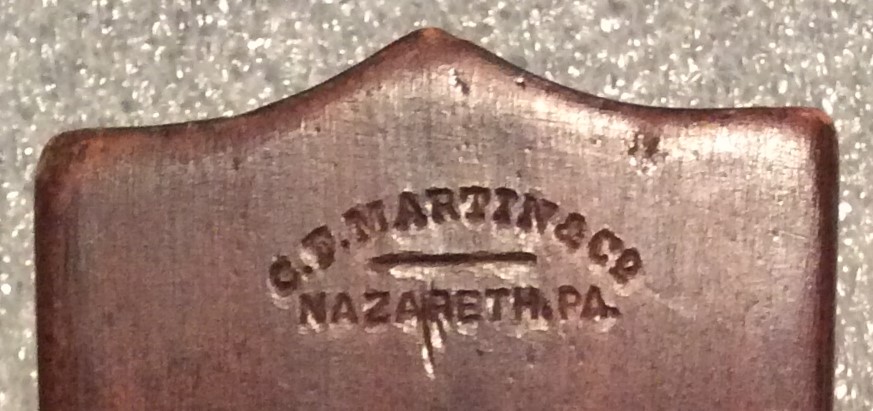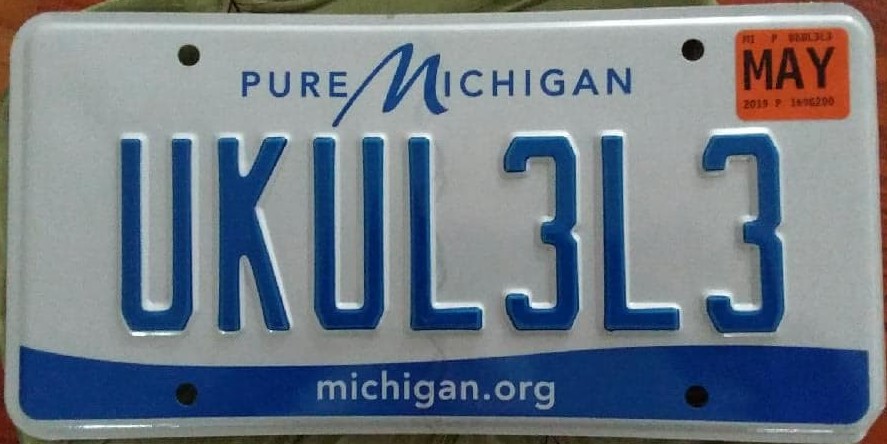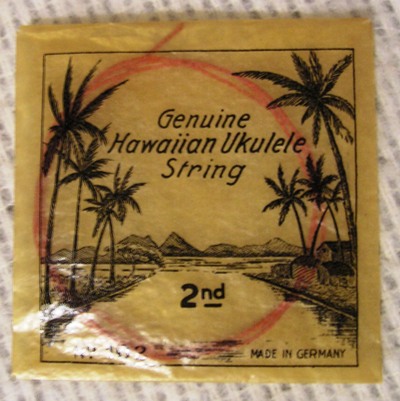Photographing Your Ukulele for Identification
I get lots of requests from readers that would like me to tell them how old their Martin ukulele is and what style it is. I love getting these requests! Most of the senders think to include a picture or two, but they are often not very helpful in allowing me to answer their questions. So I thought I would provide some examples of what information and what types of photos can help with identification. The first piece of information is going to be the overall length of the ukulele and/or the length between the saddle and the nut. For those unfamiliar with the instruments, the saddle and nut are the two ‘bars’, usually ebony, that the strings go over at each end of their run. For an ukulele you are going to get 13 inches, 15 inches or 17 inches. There are larger ones as well, but these are…
What Year Was My Martin Made?
So, you looked at my article Identify Your Vintage Martin and determined what Style your Martin is. And now, like the dozens of people who send me emails, you want to figure out what year that ukulele was manufactured. While each of the specific styles have their own characteristics that can help identify their age, this article describes some of the common factors across the styles that can narrow down the time frames. And, as always, there are exceptions to the general rules. Specifics by style will be found in future articles. Fret marker location. When they began making ukuleles, Martin marked the frets at 3, 5 and 9. In 1920, they moved the fret marker at 9 to the 10th fret. The inside stamp. The inside stamp ran parallel to the strings until mid-1916, at which point they turned it to run parallel to the interior brace. If the…
Molly Lewis
This is a short entry, but is full of links that will keep you busy for a while! One of my earliest influences in the world of the ukulele was the UkeCast, a podcast created by Chris in the US and soon joined by Nipper from the UK. The program included original ukulele music, interviews with musicians, hints and tips and ukulele related news. It only ran from 2006 to 2009 and had just gone ‘off the air’ when I first discovered the instrument. But it introduced me to a lot of musicians including The Fabulous Heftones, Lyle Ritz, Jonathan Coltrane and The Dominator. And an artist known as SweetAfton23, Molly Lewis. Molly has a way of creating songs that goes a long way toward capturing the fun the instrument provides to all of us. Her cover of Poker Face introduced me to the Stylophone and she performed her Letter…
The UKUL3L3 Dude!
After several years of being totally jealous of the individuals that had acquired Michigan’s UKULELE license plate and then the GCEA plate, (Yes, I know who has them both!) I finally went my own route. After consulting with a number of individuals and test marketing, I made a decision. You have to apply in person, so I made an online appointment at the Secretary of State office one Monday morning for the following Thursday. I walked in and out in less than ten minutes with my receipt and new registration. It arrived about two weeks later, and I was out of town. After another week, I finally put it on the car! I have also registered the domain name, so it will lead anyone that happens to look for it to The Ukulele Dude!
Midwest Uke Camp 2018 – Workshops
One of the big draws of Midwest Uke Camp is the opportunity to learn from some of the best instructors available! The organizers spend a lot of time lining up top talent and then trying to fit it all into a coherent schedule. And Ben Hassenger and company do a great job. Everyone has to choose eight workshops from a selection of over 60! When selecting workshops, I consider a number of factors. I usually start with the track aimed at my playing level, looking down the list of classes. Typically, I will eliminate any class I’ve already taken, but you’ll see below where I actually repeated myself! The other big consideration is to try and take a course from as many different instructors as I can. Not only does it expose me to new instruction, but helps me learn effective teaching techniques to use in both my ukulele workshops…
Midwest Uke & Harmonica Camp 2018 – Overview
The 3rd Midwest Uke & Harmonica Camp (MUC) has entered the history books. And it was as epic as the previous two years and getting larger! So let me start with the general and move to the specific items to share with you. I’ll share my workshop and instructor info in a separate post. Attendance has grown, there were 100 more people than there were at the first camp, getting close to 200! Which means more people to jam with, more folks to share with and more opportunities to learn! Olivet College is simply beautiful this time of year! The campus is green and lush and there are well kept beds full of flowers and perennials. The classrooms and most areas are air conditioned to help with comfort. Workshops are diverse and full of choices! This year featured six ukulele tracks, Beginner, Confident Beginner, Intermediate and Advanced Intermediate were joined…
Should I Put a Strap on My Ukulele? FAQ
To strap, or not to strap? That is the question! Whether ’tis nobler to suffer the slings and tie downs in outrageous colors, or to run free, perhaps to fall. Most professionals use a strap or leash when they are performing. The use of the device allows them to move their fingers up and down the fret board more quickly, without worrying about the possibility of the instrument falling. It is also more difficult to hold the ukulele securely when you are plugged in. The amp cord changes the weight of the instrument and pulls down on it. I prefer the use of a leash. It provides me some additional safety when playing and will prevent the instrument from crashing to the floor inadvertently. And it does not change the instrument with any holes or drilling. Jake Shimabakuro uses a leash. I got a chance to talk to him about…
Guest Post on UkuleleMusicInfo
I wrote a guest post on Elderly Instruments for Ukulele Music Info, which you can read here: Michigan, the Great Uke State – Elderly Instrument, Mighty Uke Day and More!
What Are The Best Ukulele Strings to Use? FAQ
The answer to this question requires knowledge of too many factors and variables for a single answer to work for any two players. So rather than attempt to provide a single answer, I’ll give you a lot of the factors to consider with input from some more knowledgeable folks. What type of music do you play? What type of instrument do you have? What sort of sound do you want to get out of your instrument? In general, you can expect strings to have these basic parameters: Different types require different tensions, which along with the surface of the string, affect the feel to your fingers. The best way to determine what works for you is to experiment with different types and find the ones you like best on your instrument. A type of string you love on one instrument may very well sound muddy or soft on another. From…
Reading Chord Charts and TABs – FAQ
One of the common questions beginners have is on how to read a chord chart or TABs. I’ve put together a one page diagram that should answer most of the questions and help get a beginner get used to the correct nomenclature to use when they are asking more in depth questions. Feel free to download and share with others, I just ask that you leave the website and copyright info on the document. Showing up to an ukulele club meeting for the first time can be a bit daunting. You don’t know the people and you don’t know if you have the skill level to play with them. The biggest challenge is the possibility of getting confronted by a new and unexpected format for the music. Learning the Z Chord can be a big help! Clubs collect music from many sources and they all seem to create their own…






